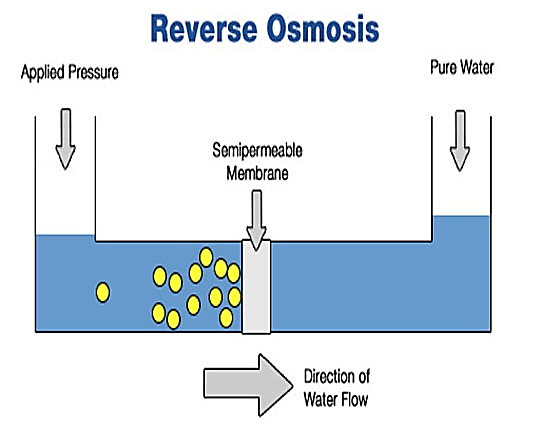
Seawater Desalination with Reverse Osmosis Plant
All Reverse Osmosis plants are basically Desalination Crops but desalination is staying referred to sea drinking water Ordinarily.As sea water has incredibly high TDS needs incredibly substantial stress to pressure sea water via membranes which might be distinct then brackish drinking water membranes.
Reverse Osmosis Plant Particulars:
A reverse osmosis plant can be a production plant, wherever h2o is purified and desalinated by forcing h2o by way of a membrane, commonly often called a reverse osmosis process. Water made by plant RO can be useful for several functions like desalination, wastewater treatment method, as well as the reclamation of dissolved minerals.
RO Plant Description
An average drinking water RO plant system requires 6 KW hrs of electric power to desalinate just one cubic meter of drinking water. Reverse osmosis water crops involves several different pre-therapy methods including softening, DE chlorination, and anti-scale cure. Pursuing pre-treatment method, substantial levels of stress send h2o via a semi-permeable membrane, which retains all contaminants except h2o.
RO Plant Design and style
To reinforce the performance and lifetime of the Reverse Osmosis plant, powerful pretreatment in the feed h2o is necessary. Number of the proper pretreatment will maximize efficiency and membrane existence by lowering:
Fouling
Scaling
Membrane Degradation
RO plant design and style is consisting of:
Deciding pretreatment necessity of Reverse Osmosis Plant
If the feed drinking water has traces of significant metals, it is very proposed to dose some chlorine to change the dissolved hefty metals to Bodily type, the media filter will filter almost all of it in the ro drinking water purifier plant.
Reverse Osmosis Plant Number of membrane
Membrane things are a significant Element of RO vegetation. The proteins (largely polyamide) that make-up membrane things range dependant upon the ending clarity and intake h2o seawater or brackish water etc
Waterman engineers Australia RO plant for seawater desalination
Waterman Engineers in Australia has made a Reverse Osmosis (RO) plant for seawater desalination, which provides quite a few benefits around other desalination methods. Here are a few essential benefits of their RO plant:
Electrical power Effectiveness:
Compared to other desalination techniques like thermal distillation, RO demands much less energy. Waterman Engineers' RO plant utilizes Superior membrane technological innovation, making it possible for it to function at reduce pressures and reduce overall Electrical power intake.
Environmental Effect:
RO generates much less brine discharge in comparison to thermal methods, cutting down the effect on maritime ecosystems. This aligns with Australia's center on environmental sustainability and conservation.
Large H2o Purity:
The RO course of action efficiently gets rid of salts, minerals, and impurities, making higher-high-quality freshwater that meets stringent ingesting water criteria. This reliability is important for supplying Safe and sound and thoroughly clean drinking water to communities.
Modular Design:
Waterman Engineers' RO plant employs a modular layout, allowing for scalability and suppleness. This is especially useful for places with various h2o demands, as modules could be extra or altered accordingly.
Lowered Footprint:
RO vegetation frequently have a more compact Bodily footprint as compared to thermal desalination plants, which often demand intensive infrastructure for heating and cooling procedures.
Brief Start-Up and Shutdown:
RO plants may be started out and stopped reasonably promptly, allowing for for better responsiveness to changing water requires and emergencies.
Lower Chemical Use:
Unlike some other desalination methods, RO requires much less substances for Procedure and cleaning, reducing chemical-similar environmental fears.
Regularity in Functionality:
The RO approach is significantly less sensitive to feedwater quality fluctuations than other solutions, guaranteeing a more constant effectiveness over time.
Price-Effectiveness:
Whilst Original investment prices can be important, RO vegetation tend to possess reduced operational and upkeep fees Over time in comparison to thermal techniques.
Reverse Osmosis (RO) is actually a water purification method that uses a partially permeable membrane to remove ions, unwanted molecules, and bigger particles from consuming h2o. By implementing force to overcome osmotic pressure, it permits the passage of water molecules though rejecting contaminants, thus generating cleanse h2o on 1 aspect with the membrane and concentrated impurities on one other.
The Functioning theory of the Reverse Osmosis (RO) plant consists of implementing pressure to some saline Resolution to pressure drinking water molecules via a semi-permeable membrane. This membrane will allow only h2o to go while rejecting salts, contaminants, and impurities, resulting in purified water on the permeate side along with a concentrated Remedy of contaminants within the brine aspect.
The benefits of Reverse Osmosis contain making substantial-good quality, clear drinking water by getting rid of contaminants, becoming effective and cost-helpful eventually, demanding nominal chemical use, and getting adaptable to various scales of Procedure from modest household programs to huge municipal plants.
RO crops have replaced Demineralisation (DM) Desalination Plant Manufacturer crops as they typically provide a extra successful and cost-helpful Resolution for water purification. RO devices Never require the regeneration chemical compounds that resin-primarily based DM crops do and can clear away a broader array of contaminants, including dissolved solids and microorganisms.
Waterman Engineers Australia very likely utilizes Reverse Osmosis (RO) vegetation for seawater desalination by forcing seawater via a semi-permeable membrane to remove salt and various impurities. This process makes fresh, potable drinking water with the ocean, addressing water scarcity and delivering a sustainable source for numerous demands.